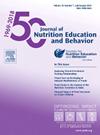在北卡罗莱纳州农村食品分发处探索健康食品获取途径
IF 2.3
3区 医学
Q2 EDUCATION, SCIENTIFIC DISCIPLINES
引用次数: 0
摘要
背景食品分发处为农村粮食不安全家庭的个人饮食做出了重大贡献,并可在改善饮食质量方面发挥作用。然而,农村食品分发处在获取健康食品分发给顾客方面面临挑战。目的探讨农村食品救济站获取健康食品和实施健康食品指南的障碍和促进因素。研究设计、环境、参与者研究人员在北卡罗来纳州的八个农村县通过有目的的滚雪球抽样从食品分发处招募工作人员。本研究于2024年6月至11月通过电话或当面进行了21次半结构化深度访谈。可测量的结果/分析深度访谈逐字记录,并使用基于食物获取框架的五个维度(可获得性、可获得性、可负担性、可接受性和住宿)的主题分析方法进行独立编码。结果调查对象以女性(90.5%)和非裔美国人(52.4%)居多(平均工作年数13.9±9.9)。食品储藏室的工作人员报告说,季节性因素、缺乏储存和设备限制了新鲜农产品的供应。食品储藏室主要是通过驾车模式进入的,位于县城内,健康食品的价格取决于地区食品银行的产品和当地杂货店的捐赠。食品储藏室的工作人员认为,捐赠的质量往往很差,而且由于食品储藏室是由志愿者领导的,严重依赖捐赠,几乎没有机会满足客户的食品要求。食品室工作人员努力创造一个健康的食品室环境,尊重顾客,避免污名。然而,很少有国家实施书面的健康食品指南,也没有提供营养教育。结论:这些发现将北卡罗来纳州农村食品储藏室在寻求提供健康食品选择和缺乏书面营养指南时所遇到的限制进行了维度化。为了克服这些障碍,可能需要建立社区伙伴关系,增加获得新鲜优质食品的机会,并为储存、设备和人员配备提供财政支持。FundingCDC本文章由计算机程序翻译,如有差异,请以英文原文为准。
Exploring Healthy Food Access Among Rural Food Pantries in North Carolina
Background
Food pantries contribute substantially to the diets of individuals living in rural food-insecure households and can play a role in improving diet quality. Yet, rural food pantries face challenges in acquiring healthy food to distribute to patrons.
Objective
Explore the barriers and facilitators to acquiring healthy foods and implementing healthy food guidelines at rural food pantries.
Study Design, Settings, Participants
Researchers recruited staff from food pantries through purposive and snowball sampling in eight rural counties in North Carolina. Twenty-one semi-structured in-depth interviews were conducted via phone or in-person from June to November, 2024.
Measurable Outcome/Analysis
In-depth interviews were transcribed verbatim and independently coded using a thematic analysis approach based on the five dimensions of food access framework (availability, accessibility, affordability, acceptability, and accommodation).
Results
Participants were mostly female (90.5%) and African American (52.4%) food pantry staff (13.9 ± 9.9 average years of work experience). Food pantry staff reported that seasonality, lack of storage and equipment constrained fresh produce availability. Pantries were predominantly accessible via a drive-through model, located within the county seat, with healthy food affordability dictated by regional food bank offerings and local grocery store donations. Food pantry staff felt that donation quality was often poor, and there was little opportunity to accommodate client’s food requests due to the pantries being volunteer-led and heavily reliant on donations. Pantry staff strived to create a healthy pantry environment by respecting patrons and avoiding stigma. However, few implemented written healthy food guidelines nor provided nutrition education.
Conclusions
These findings dimensionalize constraints experienced by rural North Carolina food pantries as they seek to provide healthy food options and the lack of written nutrition guidelines. Community partnerships that increase access to fresh, quality foods and financial support for storage, equipment, and staffing may be needed to overcome these barriers.
Funding
CDC
求助全文
通过发布文献求助,成功后即可免费获取论文全文。
去求助
来源期刊
CiteScore
4.20
自引率
11.50%
发文量
379
审稿时长
44 days
期刊介绍:
The Journal of Nutrition Education and Behavior (JNEB), the official journal of the Society for Nutrition Education and Behavior, is a refereed, scientific periodical that serves as a global resource for all professionals with an interest in nutrition education; nutrition and physical activity behavior theories and intervention outcomes; complementary and alternative medicine related to nutrition behaviors; food environment; food, nutrition, and physical activity communication strategies including technology; nutrition-related economics; food safety education; and scholarship of learning related to these areas.
The purpose of JNEB is to document and disseminate original research and emerging issues and practices relevant to these areas worldwide. The Journal of Nutrition Education and Behavior welcomes evidence-based manuscripts that provide new insights and useful findings related to nutrition education research, practice and policy. The content areas of JNEB reflect the diverse interests in nutrition and physical activity related to public health, nutritional sciences, education, behavioral economics, family and consumer sciences, and eHealth, including the interests of community-based nutrition-practitioners. As the Society''s official journal, JNEB also includes policy statements, issue perspectives, position papers, and member communications.

 求助内容:
求助内容: 应助结果提醒方式:
应助结果提醒方式:


